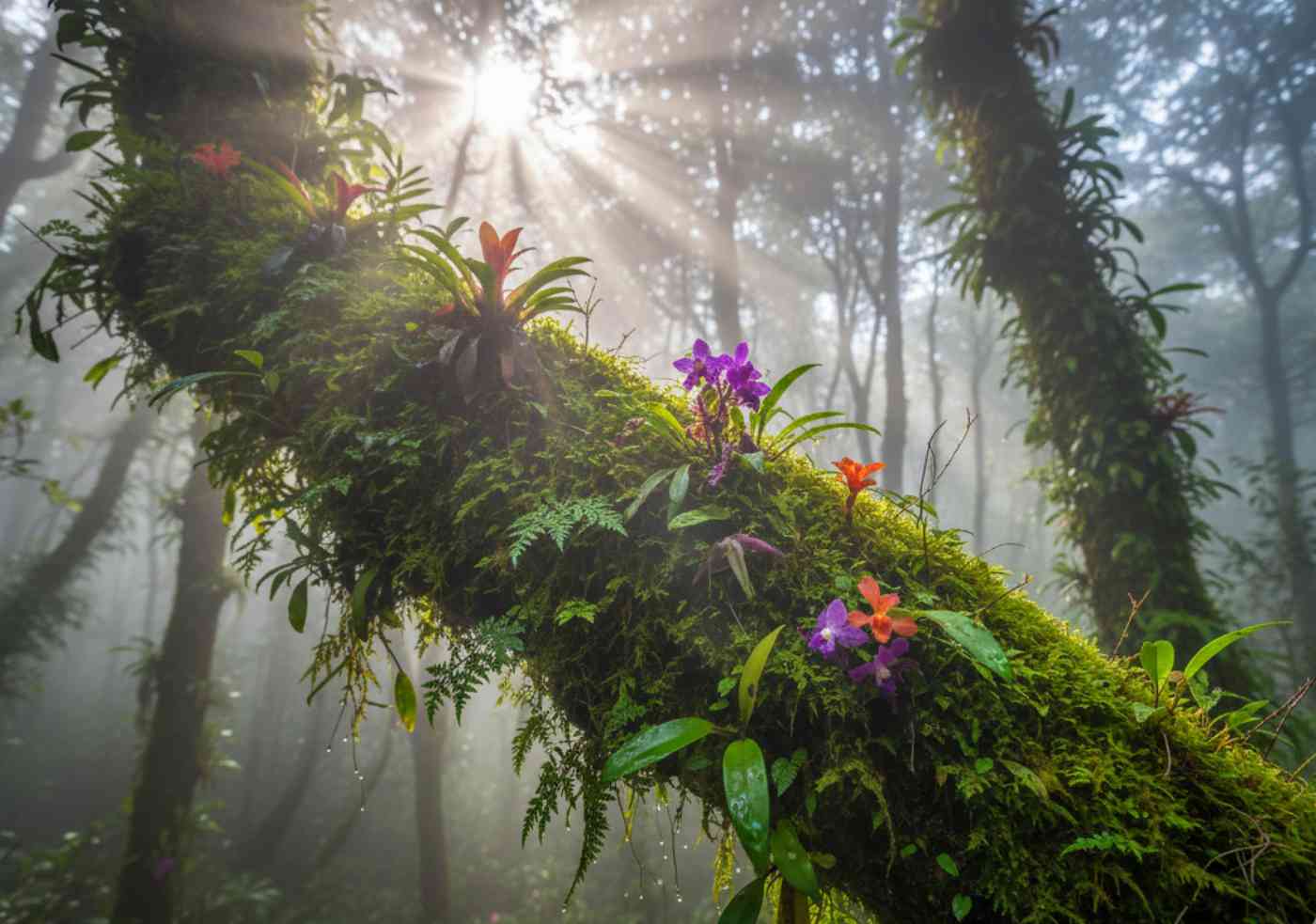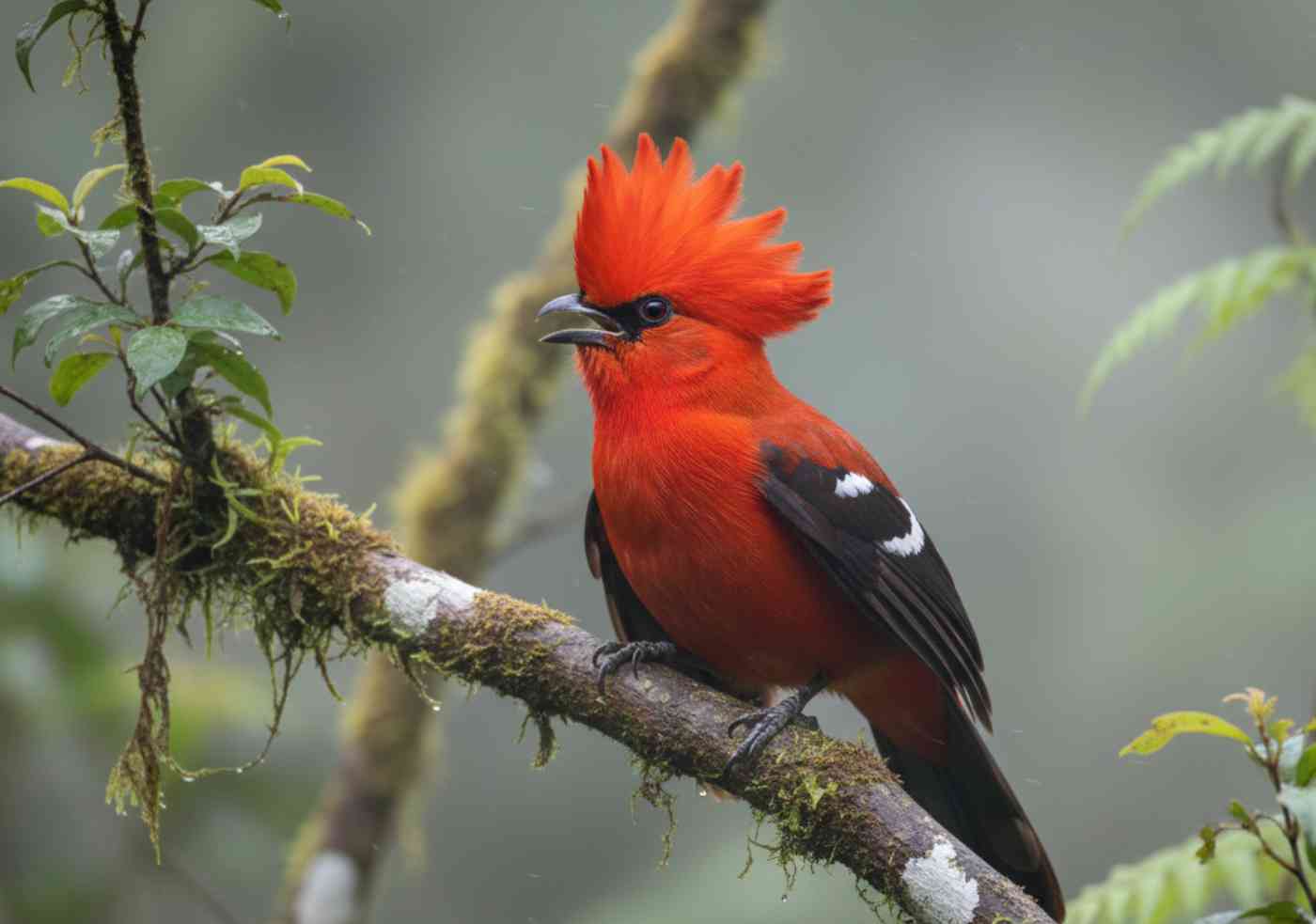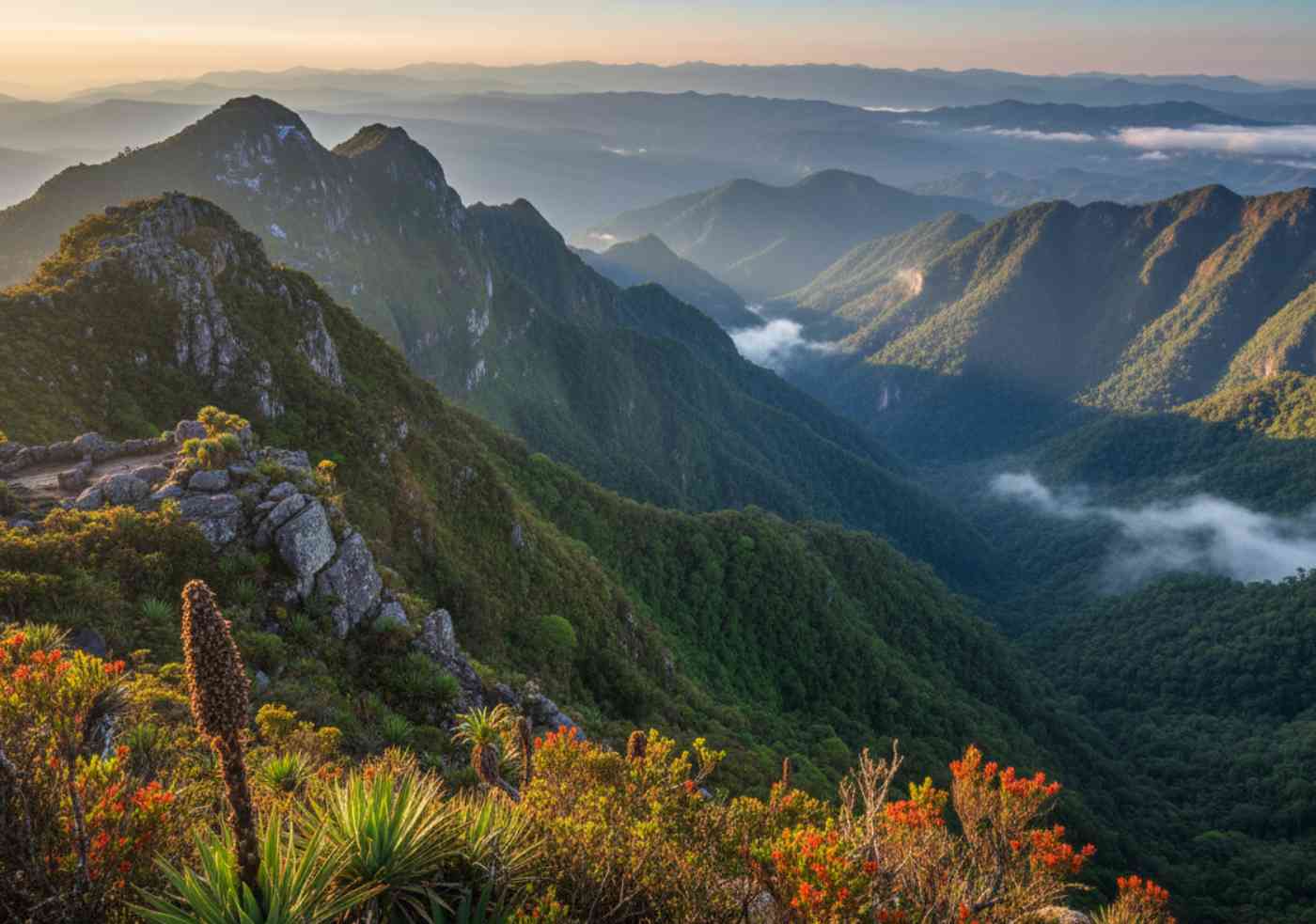The geography of Peru is not a static canvas, but a dynamic battleground where colossal forces collide. Nowhere is this more apparent than in the liminal space where the Andes Mountains—that continental spine of rock and ice—finally collapses into the Amazon basin. This is no mere geographic border; it is a violent, fertile transition zone, a biological laboratory operating on a planetary scale that defies our tidy classifications. It is the threshold where two worlds don’t just meet, but actively create one another in a perpetual, chaotic embrace, shaping the staggering biodiversity of the Peruvian high jungle.
Nature does not put on a show; it reveals a process. And nowhere is its grammar more complex, its script more exquisite, than at the edge where Andean stone surrenders to Amazonian green.
This region, known to Peruvians as the Selva Alta or Rupa Rupa, is far more than an intermediate ecosystem. It is a living text, a biological codex written in a language of microclimates and vertiginous slopes. To understand it is not an act of simple cataloging, but one of exegesis—interpreting how the fundamental tension between mountain and jungle has birthed one of the most explosive and unique concentrations of life on Earth. It is a profound reminder that borders, far from being lines of separation, are the true crucibles of creation.
The Vertical Crucible: Where the Andes Forge the Amazon
The extraordinary richness of the high jungle is no accident, but a direct consequence of its geophysical architecture. The Andean cordillera acts as a monumental wall, intercepting the humid air masses traveling west from the Atlantic across the Amazon. Forced to ascend, this air cools, condenses, and discharges its moisture as torrential rain upon the eastern slopes. This phenomenon, combined with an extreme altitudinal gradient, creates an almost infinite array of ecological niches within a compressed geographical space.
This interaction sculpts a fractured, vertical landscape—a mosaic of deep valleys and steep mountainsides where temperature and humidity can shift dramatically in a matter of feet. It’s a stage that actively drives speciation, the process by which new life forms emerge. Plant and animal populations become isolated in these “sky islands,” evolving independently and adapting to hyper-local conditions. For the observant traveler, this means that crossing from one valley to the next is not just a change of scenery, but a leap between distinct biological realities, an experience that redefines the very meaning of wilderness. This complex relationship between altitude and life is a story told across the entire region, a key to understanding the untamed heart of the lands surrounding Cusco.
Key Drivers of Speciation:
- Altitudinal Gradient: The range from 1,600 feet (500m) to nearly 13,000 feet (4,000m) creates multiple “ecological floors,” each with its own distinct assembly of flora and fauna.
- Complex Topography: The rugged mountain chains and deep canyons act as natural barriers, isolating populations and fostering genetic divergence.
- Ecoregional Convergence: This is the meeting point where Andean, Amazonian, and often endemic species—which exist nowhere else on Earth—coexist and interact.

A Catalog of the Impossible: The Explosive Biodiversity of the Peruvian High Jungle
If the Selva Alta is a laboratory, its creations are a testament to life’s relentless exuberance. This is the domain of the spectacled bear (Tremarctos ornatus), South America’s only ursid, a living relic of Pleistocene megafauna that haunts the misty cloud forests. It is also the theater for the Andean cock-of-the-rock (Rupicola peruvianus), Peru’s national bird, whose males perform hypnotic courtship dances—a shocking explosion of traffic-light-red against the perpetual green.
🔎 The Evidence: Peru is home to over 3,000 species of orchids, the vast majority of which are found in the montane forests of the Selva Alta. These are not merely flowers; they are masterpieces of co-evolution, with forms and colors engineered to attract specific pollinators, from hummingbirds to hyper-specialized insects. Each bloom is the conclusion of a multi-million-year evolutionary conversation. To witness this reality firsthand, to feel the moisture-laden air and hear the symphony of life that envelops you, is the transformative core of a true journey—an immersion into this sacred text of nature that defines an authentic expedition like the Inka Jungle Premium experience.
The Cloud Gardeners: Life Inside the Mist
Within the high jungle exists an ecosystem that feels torn from a dream: the cloud forest. Shrouded in an almost constant mist, this is a world where water does not just fall from the sky but materializes directly onto the surfaces of leaves. The humidity is absolute, blanketing every trunk and branch with a thick carpet of mosses, lichens, bromeliads, and orchids. These “hanging gardens” are living sponges, capturing and regulating the water that becomes the source of the rivers that will one day form the Amazon. To walk here is a singular sensory experience: the silence is profound, muffled by fog and broken only by the drip of water and the call of an unseen bird.
The Fragile Edge: A Crossroads Between Discovery and Disappearance
This incredible concentration of life is, paradoxically, one of the world’s most fragile ecosystems. The same steep topography that fosters its biodiversity makes it profoundly vulnerable to erosion and landslides—processes accelerated by deforestation. The expansion of agriculture, illegal logging, and the looming threat of climate change represent an existential challenge to this delicate balance. Rising temperatures are forcing species to migrate to higher altitudes, but for those already living on the peaks, there is nowhere left to go. We are in a race against time; scientists continue to discover species new to science in these forests every year, even as others may be vanishing before we have a chance to know them.

🤔 To Reflect On: Is it possible to foster human development without destroying these irreplaceable ecosystems? What responsibility do we, as visitors, bear for their conservation? And what ancestral wisdom, rooted in the Andean worldview that sees the land as sacred, might we apply for a more harmonious stewardship of these territories? This reality presents us not just with a conservation challenge, but a philosophical one, forcing us to decide what kind of relationship we want to have with the very source code of life.
The Peruvian high jungle is a summons, an invitation to witness one of the most intense and complex expressions of life on our planet. If you feel the call not just to see, but to understand and connect with this world, then a conversation is the first step. Let’s discuss how you can embark on an expedition that respects the rhythm of this sacred land and transforms your perspective on the world. Contact a specialist to begin planning your journey into the heart of Peru.

